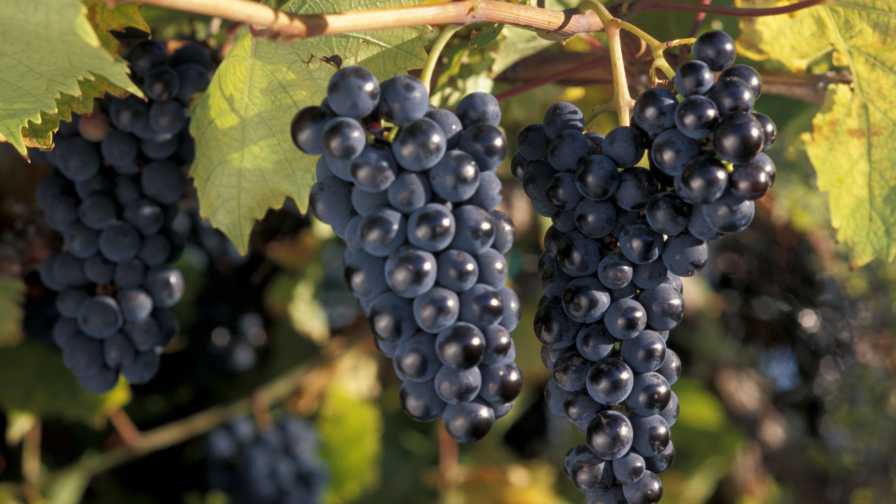Count Down The Top 5 Postharvest Pathogens
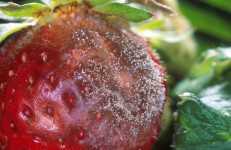
The quality of produce after it leaves the field should be high on any grower’s checklist. These common diseases often start in the field or packinghouse, so practices to help reduce conditions that lead to disease spread are important.
1. Botrytis blight (gray mold) of strawberry and other soft fruits caused by Botrytis cinerea
This disease produces gray nests of mold and fruit particularly if fruit aren’t refrigerated. It commonly occurs on fruit blossoms or newly set fruit after frost damage. In strawberry plantings, gray mold colonizes drying flower petals, then grows into developing fruit and becomes quiescent until fruit ripen or suffer frost injury. Treatment of crops at peak-bloom periods with labeled fungicides provides good control, but often prompt refrigeration after harvest is necessary to prevent gray mold development in clamshells during marketing.
Top 5 Postharvest Pathogens ctd.
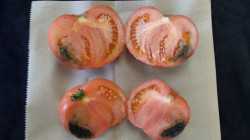
2. Black mold rot of tomato and pepper caused by Alternaria alternata
This pathogen produces dark-colored lesions, which are covered with dark-gray to black mold growth. It usually appears on tomatoes when fruit are damaged by chilling or have deep shoulder cracks. Black mold sometimes develops internally if fruit are bruised during harvest and handling. It is a ubiquitous opportunistic pathogen that is best controlled by producing healthy crops free of developmental injuries such as concentric and radial cracking.
Top 5 Postharvest Pathogens ctd.
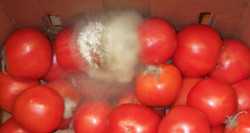
3. Rhizopus/mucor rots caused by Rhizopus stolonifer/Mucor spp.
These pathogens cause decays in a wide range of primarily fruits. This decay is easy to spot because a large volume of mycelium (mold) is produced and liquids leak from decaying fruit. Sanitation measures are the best methods to control this disease. Sanitation includes removing cull material from packinghouses, washing plant residues off equipment and picking containers, treating all cleaned surfaces with chlorine bleach or other approved chemical sanitizer, and maintaining adequate levels of sanitizer in wash and handling water.
Top 5 Postharvest Pathogens ctd.
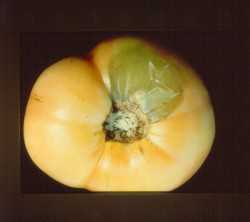
4. Bacterial soft rot caused by Pectobacterium carotovorum
(syn=Erwinia carotovora)
This disease features complete collapse of tissue accompanied by bacterial slimes and disagreeable odors. Boxes of packed vegetables have been known to collapse as the disease spreads. The disease often follows infections by blight and mold pathogens. It occurs in most vegetables, but doesn’t infect soft fruits. Development is usually favored by moist conditions and warm temperatures. If vegetables remain wet for several days in the field, bacterial soft rot is likely to appear at insect wounds or mechanical injuries due to staking. It is a strict wound pathogen, but can infect internal structures of vegetables if they are water congested or are infiltrated by water. Control measures include: sanitation, avoiding harvesting or handling wet crops, prompt cooling after harvest, avoiding injuries to crop, and preventing fungal blights.
Top 5 Postharvest Pathogens ctd.
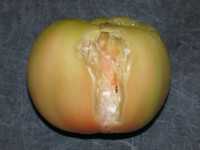
5. Sour rot caused by Geotrichum candidum in tomatoes
This pathogen often produces an odor similar to pickles, hence sour rot. Normally this pathogen produces a white mold in cracks in ripe tomatoes, but does little damage to mature green fruit. However, if green fruit are water-congested, injuries and developmental cracks in fruit surfaces are diseased and release large amounts of fluids that spread the pathogen and create wet spots in box surfaces. If these fruit are allowed to dry, a copious but thin layer of white mold develops over decaying surfaces. Control measures once again call for sanitation as described for Rhizopus rot.






